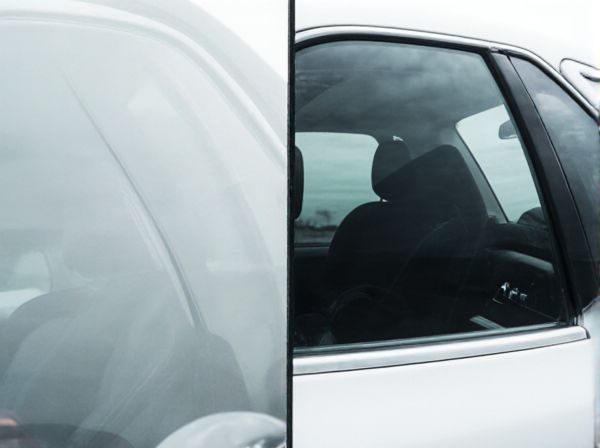
Photo illustration: Split Convex vs Single Convex
Split convex lenses consist of two or more lens elements separated by a small gap, allowing for better control of aberrations and improved image quality compared to single convex lenses, which consist of a single curved surface converging light rays to a focal point. Split convex lenses are often used in complex optical systems where precision and clarity are critical, while single convex lenses are simpler and commonly found in basic magnifying glasses and simple imaging devices. Understanding the differences in design and application helps you choose the right lens for your optical needs.
Table of Comparison
| Feature | Split Convex Mirror | Single Convex Mirror |
|---|---|---|
| Design | Divided into sections, combining flat and convex segments | Uniform convex surface |
| Field of View | Wider, reduces blind spots with multiple angles | Standard wide-angle, but limited compared to split convex |
| Image Distortion | Minimal, due to combination of mirror types | Higher distortion toward edges |
| Depth Perception | Improved, provides better spatial judgment | Less accurate depth perception |
| Cost | Generally higher due to complex design | Lower, simpler manufacturing |
| Use Case | Ideal for enhanced safety and parking assistance | Suitable for basic rear and side view |
Introduction to Convex Mirrors
Convex mirrors curve outward, causing reflected light rays to diverge and produce smaller, virtual images with a wider field of view. Split convex mirrors combine two or more convex surfaces to enhance reflection angles and depth perception, offering improved panoramic visibility compared to single convex mirrors. These mirrors are essential in applications like vehicle side mirrors and security systems, where expanded situational awareness is critical.
What is a Split Convex Mirror?
A split convex mirror consists of multiple convex mirror segments combined into a single unit, enhancing the field of view and reducing blind spots compared to a traditional single convex mirror. It provides wider coverage area for surveillance or safety applications, making it ideal for parking lots, warehouses, and road intersections. By offering multiple angles in one compact design, split convex mirrors improve visual awareness and security efficiency.
What is a Single Convex Mirror?
A single convex mirror is a curved reflective surface that bulges outward, used primarily to provide a wide field of view by diverging light rays. It is commonly installed in vehicles and security systems to minimize blind spots and enhance safety through a broader perspective. Unlike split convex mirrors, which are segmented to offer multiple viewing angles, a single convex mirror provides a continuous, distortion-minimized reflection optimal for general surveillance and road use.
Key Differences between Split Convex and Single Convex
Split Convex optimization decomposes complex problems into multiple smaller convex subproblems, promoting parallel processing and improved computational efficiency, while Single Convex deals with a single unified convex problem. The key difference lies in the structure: Split Convex allows for distributed optimization frameworks handling separable objectives, whereas Single Convex focuses on solving one convex function globally. This results in Split Convex methods being more scalable for large-scale or multi-agent scenarios compared to the typically centralized approach of Single Convex optimization.
Applications of Split Convex Mirrors
Split convex mirrors offer enhanced field of view and reduced blind spots compared to single convex mirrors, making them ideal for security surveillance and traffic monitoring. These mirrors are extensively used in retail stores, parking lots, and road intersections to improve visibility and prevent accidents. The segmented design of split convex mirrors enables better distortion control and versatility in various safety-critical environments.
Applications of Single Convex Mirrors
Single convex mirrors are widely used in vehicle side mirrors to provide a wider field of view, reducing blind spots and enhancing road safety. Their ability to produce diminished, upright images makes them ideal for security and surveillance systems, allowing for broader area coverage. In retail environments, single convex mirrors help monitor aisles and prevent theft by enabling staff to observe multiple sections simultaneously.
Advantages of Split Convex Mirrors
Split convex mirrors provide enhanced field of view compared to single convex mirrors by combining multiple mirror segments, allowing for broader surveillance coverage and reduced blind spots. These mirrors improve safety in high-traffic areas such as warehouses, parking lots, and retail stores by offering better visibility of corners and aisles. Maintenance is more efficient as damaged segments can be replaced individually, reducing overall replacement costs and downtime.
Benefits of Single Convex Mirrors
Single convex mirrors offer enhanced image clarity and reduced distortion compared to split convex mirrors, making them ideal for precise visual applications. These mirrors provide a uniform focal length across their surface, which improves accuracy in measurement and inspection tasks. Their seamless design also simplifies installation and maintenance, contributing to long-term cost efficiency.
Choosing Between Split Convex and Single Convex
Choosing between Split Convex and Single Convex lenses depends largely on the desired optical performance and application. Split Convex lenses, divided into two or more segments, offer greater control over aberrations and are ideal for complex imaging systems requiring fine-tuned focus adjustments. Single Convex lenses provide simpler, cost-effective solutions for general magnification and light convergence, making them suitable for basic optical devices.
Conclusion: Which Convex Mirror is Right for You?
Choosing between a Split Convex and a Single Convex mirror depends on your specific needs for field of view and image distortion. Split Convex mirrors provide a wider panoramic view with reduced blind spots, making them ideal for security and surveillance applications where comprehensive coverage is crucial. Single Convex mirrors offer a simpler design with less distortion, suitable for tasks requiring a clear, straightforward reflection without the complexity of multiple segments.
 caratoz.com
caratoz.com